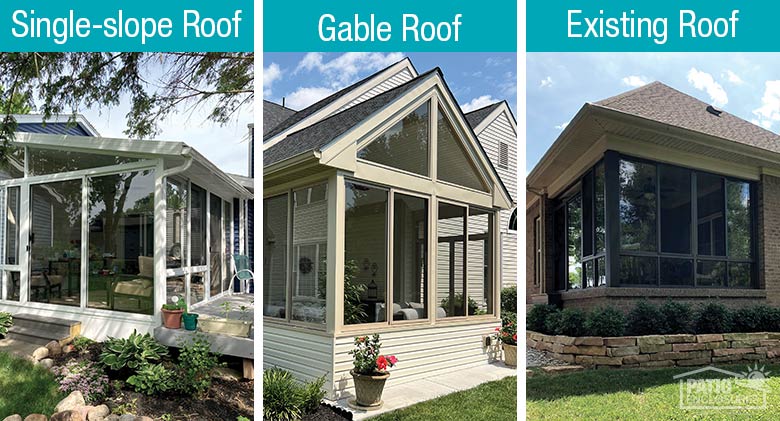
In this post, you will learn…
- Sunroom roof options and benefits
- The difference between a gable roof and single-slope roof
- How to inspect and maintain your roof
Sunroom Roof Options and Benefits
A sunroom can be a great addition to any home. Whether you choose a three season room or four season room, a sunroom provides a place to relax and enjoy the outdoors from the comfort of the indoors. One of the important pieces of a sunroom is the roof. While it may seem like a simple choice, you have more options than you might think! Some of the most common, yet different types of roofs include classic gable, single-slope, glass roof panels, solarium straight eaves or even your existing roof.
There are various things to consider when choosing the type of roof for your sunroom, including price and structure. A single-slope roof, also referred to as a shed roof, is attached to a taller wall which allows for easier construction and fewer building materials, making it more economical. Gable roofs have a more traditional look and feel more spacious with cathedral style ceilings. Glass roof panels allow you to enjoy an open sky view and control the amount of light entering your sunroom at the same time. A solarium features an all-glass roof and can be constructed with a single-slope or gable roof. If you are looking to use your existing roof, no problem! All of our sunrooms are custom made for your home so they will fit the space exactly with no fillers needed.
Gable Roof vs. Single-Slope Roof
So, you’ve made the decision to add a Patio Enclosures® sunroom to your home. Unless you are planning to enclose an existing covered space, you’re going to need to decide on the style of roof that can make your dream sunroom a reality! If you’re looking for the most cost-efficient styles, the gable roof and single-slope are two great options. But, while both are great options, learning the pros and cons of each will help you make your final decision!
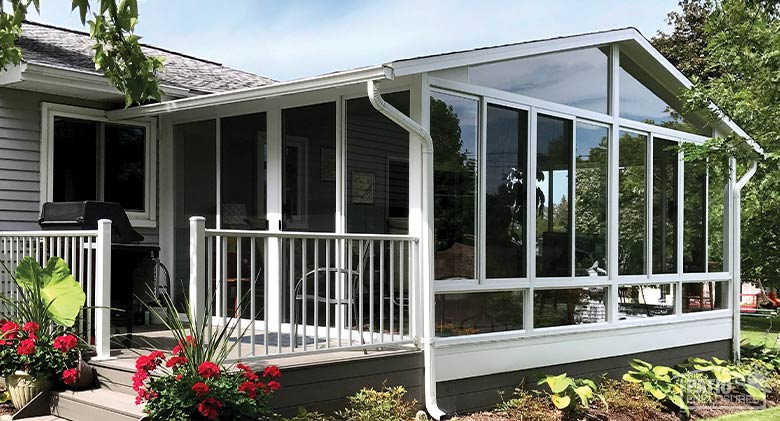
Gable Roof
The gable roof style creates a classic look and is used frequently in home construction. It is also designed to handle all seasons. With most gable roofs constructed at an angle of about 40 degrees, water and snow can easily roll off, while allowing for more ventilation and vaulted ceilings inside. Proper construction is essential for adequate roof support, especially in areas that frequently experience heavy wind.
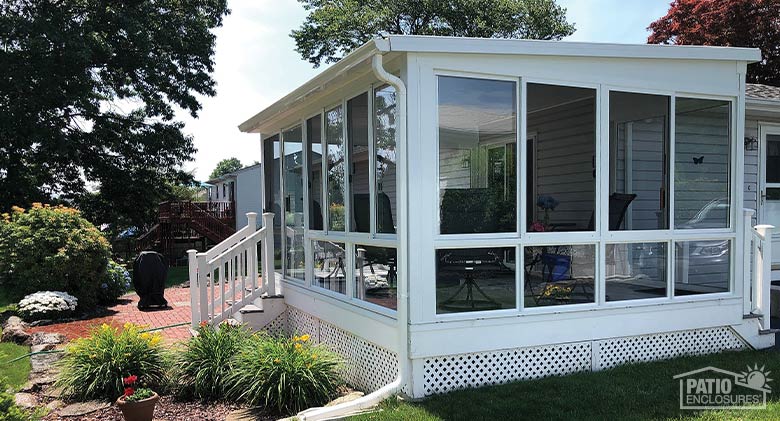
Single-Slope Roof
Single-slope roofs are most commonly used for home additions, sheds, and porches, but over the years have gained more popularity in modern home construction. Sometimes referred to as shed roofs, single-slope roofs offer easy assembly and require fewer materials. A single-slope roof’s typical steepness allows for easy snow and water runoff, making it great for heavy snow and rain regions. The pitch of the slope will be determined by your home’s style and construction.
How to Inspect and Maintain Your Roof
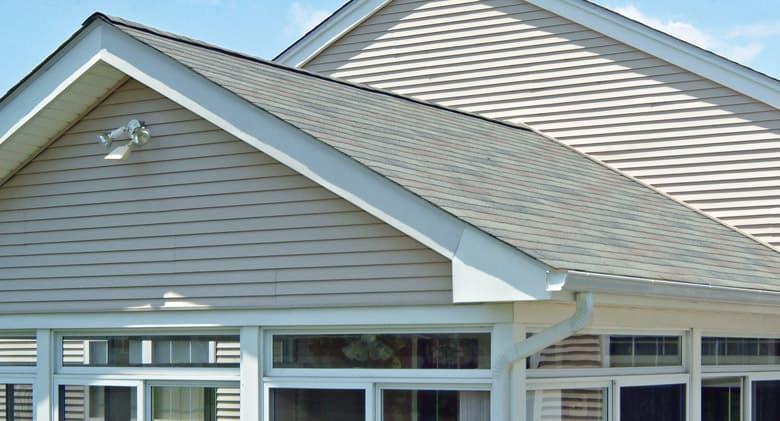
When it comes to maintaining your home, inspection of all areas should be part of the process. Your roof is a key part in keeping your home comfortable and safe, and a sunroom roof is no different. Though sunrooms are unique additions, they need to be inspected as well.
With any type of roof, look for indications of water leakage, like stains or cracking on the ceiling. Sometimes, just minor maintenance is needed, other times the issue may be more involved. If the roof is shingled, look for shingles that are curled, loose, or missing. They may indicate problems with the underlying structure of the roof. Check that all nails are secure and that caulking and flashing are not damaged or deteriorating.
If you have a tile roof look for signs of water seepage from under the roof tiles and streaks on the fascia board. Also check for missing or cracked tiles and algae buildup in one area. For metal roofs, discoloration of a portion of the roof can indicate corrosion and potential trouble. You should also check for loose or wrinkled panels that could allow water to flow under the material.
Routine maintenance of your roof can go a long way in preventing damage. Keep gutters and downspouts clean and unclogged to avoid water buildup and overflow out of the gutters which can damage windows and walls. Remove loose debris that lands on the roof, especially in the winter months or after high winds. Eliminate moss and mold by spraying moss remover and cleaner, and then scrubbing it with a brush or power washer. Simple steps like these can help avoid major trouble down the road.
If you are unsure of inspecting your home or making improvements on your own, contact a professional who will make a thorough inspection and recommend the proper next steps.
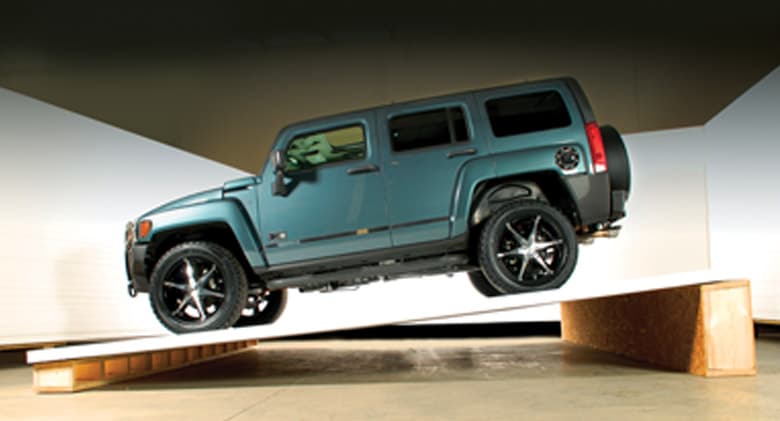
What to Look for in a Sunroom Roof
If you’re considering purchasing a sunroom, be sure to ask questions about the roof structure. A flimsy roof can be prone to leaks or collapse.
Patio Enclosures has spent years building the strongest roofs in the industry. We offer both 3-inch and 6-inch roofs depending on your specific application and location. Whether you choose a gable or single-slope roof, both styles and thicknesses are constructed using structural I-beams for maximum support. To test just how strong our roof systems are, we parked a 5,100-pound Hummer on our 3-inch roof, and it passed with flying colors.
Learn more about which roofing style best suits your home by requesting a free, in-home estimate using our online form or by calling 800-230-8301.
Learn More About Our Sunrooms
 You May Also Be Interested In:
You May Also Be Interested In: